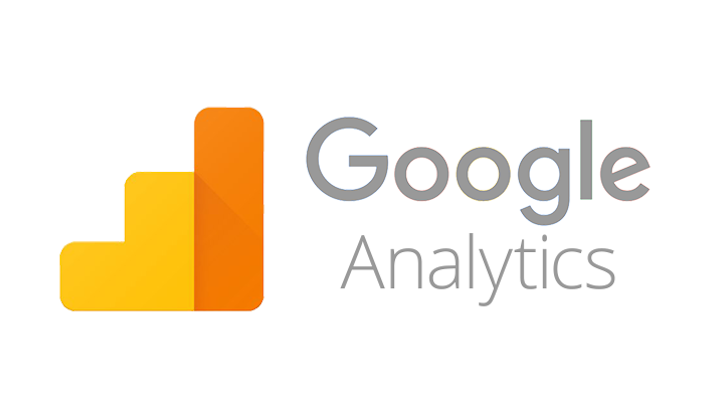
Effective search engine optimization can be simplified with certain tools. Because without helpful tools, SEO is often very tedious work for Google and Co. Companies, the self-employed and freelancers in particular like to use a wide variety of SEO tools to gain an advantage on Google. In terms of the approach, that makes sense at first.
But: Search engine optimization is a multifaceted topic . Therefore, depending on the project, you often have to work with different “Google SEO Tools”. That’s because you need different tools for different SEO topics. Here, the work with corresponding analyzes usually focuses on the following areas:
- Relevance: Finding the right keywords for your own company.
- Reach: Recognize and improve the visibility of your own Internet presence in search results.
- Rankings: Optimize the positions in the results of Google with regard to the relevant search terms.
- Response: Increase the click rate in the SERPs (Search Engine Result Pages).
- Reaction: Recognize and use the behavior of the user based on the search terms entered.
- Results: Review of the results to see whether all SEO measures have actually led to the achievement of the goals.
A good SEO tool can support you in the analysis and implementation of these tasks. Here you can subdivide the respective activities for analysis into different stages or work steps. A comprehensive SEO tool should therefore be able to help you with the following points:
Keyword Research : Understand which search terms are relevant to your business and how often they are searched for.
Competition analysis : Understanding for which search terms your competitors are listed and you are not yet and which search terms are more or less competitive.
Technical SEO : Find possibilities and signs for technical optimization (crawling, website speed, indexing, etc.)
On-page optimization : improvement of website content, structure and metadata.
Off-page optimization : Help to implement good internal and external links.
Content marketing : creating new meaningful content to attract new customers.
Mobile SEO : Optimizing the website in terms of SEO-friendliness for mobile devices.
SEO KPIs : Success measurement using meaningful key figures.
Individual analysis tools cost a lot of time and money

There are more than enough SEO tools that you can use to accomplish these tasks. However, the majority of the tools have specialized in a certain area – such as keyword research, backlinks or competitor analysis. The offer here is so diverse and therefore difficult to understand.
Due to a lack of capacity, it is so often difficult to find exactly the right SEO tools for Google. In addition, you would have to use different tools for your various SEO activities. This not only takes up a lot of time, it also costs a lot of money. After all, you then have to bear the corresponding fees or costs for several tools at the same time .
Solution: Use the best “all-in-one” tool
As part of a comprehensive analysis with regard to the most important SEO criteria, two SEO tools convinced us. With SEMrush and XOVI there are explicitly coherent tools of this type, whereby the former SEO tool always has a little bit ahead in independent tests. Both SEO tools see themselves as full-service solutions and, in contrast to other tools, offer an enormous variety of functions, so that every area from keyword analysis to link management to the KPIs of social networks is covered. However, there are also significant differences.
What does SEMrush offer?

SEMrush offers all SEO tools from a single source. From competitor analysis, keyword tracking, social media reviews to SEA analyzes – SEMrush can help you in all areas. It is not for nothing that ebay, booking.com, HP and many other well-known companies trust the provider . And best of all: SEMrush is constantly being further developed, from which you as the user ultimately benefit significantly. On the other hand, you can test the SEO tool free of charge beforehand and let it convince you personally.
SEMrush focuses on three main areas
In contrast to other Google SEO tools, SEMrush is basically divided into three independent main areas with different focuses. These are the topics of domain analysis, tools and projects.
Domain analysis
You can analyze any website in detail. The spectrum of analysis options ranges from organic keyword research to backlink analysis to advertising research (Google Shopping, Google AdWords, Bing, etc.), traffic analysis or, for example, competitor analysis . Other SEO tools don’t offer you this variety of options for Google.
Tools
With a wide variety of tools you can combine, connect and visualize the analysis data from SEMrush . With the help of these features, competing domains can be compared in detail and the keyword competition can be assessed with just a few clicks of the mouse. You can proceed, for example, according to the keyword difficulty level or you can compare the respective domains with each other and see the differences between your website and the competition. Most other SEO tools often only have limited amounts of data from Google and therefore only offer very scaled-down options for these functions.
Projects
You can start global campaigns for your own website at any time; You will receive all relevant key figures with regard to keyword rankings, competitors and on-page optimizations directly in one central location. The focus here is on position tracking , site and backlink audits , brand monitoring , the on-page SEO checker and a content tool for evaluating and comparing published content. And if you plan to write new content for your website, for example, the Writing Assistant can show you which words you should use and what length your text should have.
What does XOVI offer?

XOVI has a similar structure and offers you something special. The SEO tool relies on a clear dashboard system . That means: It works as a template for the relevant KPIs. Although this is unusual for an SEO tool, it gives you the advantage that you can easily display all the key data for different domains by calling up the appropriate input field. This means that you don’t have to set up new dashboards for each individual project. If you are working on many projects at the same time, this approach will save you real time.
Basically, you will find the most important graphics and tables in the standard dashboard:
- Keyword performance indicators
- Link performance indicators
- Social performance indicators
- Keyword ideas
- Rising keywords
- Subdomains
- Graphic representation of your keywords
- Online Value Index (OVI)
- Graphics for your rankings (Google etc.)
- Ranking distribution graphic
This selection is defined as the standard at XOVI. However, you can create your own dashboard with the help of the XOVI Suite. This opens up good opportunities for you to create an individual approach.
SEMrush or XOVI, who offers better data?

Clarity and information content are basically guaranteed both with one and the other SEO tool.
But: XOVI also offers clearly categorized and extremely diverse functions for analyzing a website in detail. In a direct comparison, however, the SEMrush analysis tool basically provides more relevant information and data on competitors or, for example, search queries in the dashboards used . The information screens at both providers are designed to be absolutely clear, so that there is no overload due to the flood of data.
In contrast to SEMrush, however, XOVI weakens in small areas. Before you can get all the data you need with this tool, numerous scrolling movements are required. This not only takes comparatively longer, it also affects handling at the same time. In this area, SEMrush is simply structured in a more straightforward manner.
The only “disadvantage” with SEMrush are the constantly developing new features, as the toolbar becomes fuller and fuller as a result. Long-term users are of course happy about additional functions in order to get even more out of their website. However, the beginner is a bit overwhelmed at the beginning because he just doesn’t know his way around. For this reason, it is all the better that both providers now offer a free version for 7 or 14 days . So you can first familiarize yourself with the SEO tools and only then decide whether you want to continue using it.
Advantages of XOVI
XOVI has explicit advantages, where the completely German menu navigation leaves a strong impression.
- The SEO tool provides you with suggestions for opportunity keywords and can calculate the value of your rankings.
- You have access to an extremely extensive backlink analysis and receive suggestions for links that have been removed and those that have been built.
- This SEO tool allows you to specify an unlimited number of competitors who you can examine for keywords and backlinks as part of a comprehensive SEO analysis.
- Based on your respective rankings, the tool also determines your competitors itself.
- XOVI can display the visibility from all social media channels.
- Affiliate marketing and Google AdWords are supported.
- You can read reports via API, view them online or have them sent by email.
- XOVI offers you free support by phone or live chat in German.
Advantages of SEMrush:
Based on user experience and relevant tests, SEMrush generates very special features and advantages compared to other SEO software:
- With the help of the Site Audit Tool, you can read the general condition of the respective website as well as the problems to be treated in detail at any time.
- With the SEO Ideas Tool you have an effective tool at hand that compares your content with that of your competitors. This will help you to find your own ideas in the long term.
- To determine the effects of your SEO measures, you can use the Position Tracking Tool to track the development of your keyword placements.
- In addition, SEMrush has a new sensor tool that shows you graphics and an explicit SERP score. So you have an overview of the development of your Google rankings and visibility at all times.
- You can easily monitor your reputation and brand image online at any time with the integrated brand monitoring tool.
- SEMrush offers you numerous functions with the support of which you can make a comprehensive evaluation of competitors. Whether, for example, changes in relation to keyword positions or a comprehensive analysis of the traffic – all developments will be outlined for you in detail.
SEMrush also has a major disadvantage compared to XOVI. The user interface of the SEO analysis tool is not continuously in German due to permanently added features , which reduces the user-friendliness a little and sometimes makes handling more difficult. However, since all tools always work well, this is not really a problem. You can also assume that appropriate translations will be added here in the near future, as it is now the most widely used tool worldwide and already has branches in Germany.
Conclusion
SEMrush and XOVI are both two very powerful SEO tools for website analysis. Anyone who implements SEO themselves or who wants to keep an eye on a website can make working with the tools much easier.
XOVI offers slightly fewer functions and includes smaller amounts of data. For this, the German provider scores linguistically and for many in the overview. Ultimately, SEMrush is a bit ahead for us , because here the information density , the clarity and the functional structure for an all-round better added valueand is constantly being developed. As already anchored in the name SEMrush, you are not using a pure SEO tool. For example, in addition to features for backlinks, keywords and on-page analyzes, it is also a great help in the area of AdWords. You should not underestimate this possibility, because despite Google Trends and the Google AdWords Tool, in practice you can never consider all efficient keywords. A look at the competitor’s paid search terms certainly doesn’t hurt either.
In our opinion, SEMrush is ideally suited for companies, the self-employed and freelancers in order to have a comprehensive SEO tool at hand without having to pay for many different tools.








